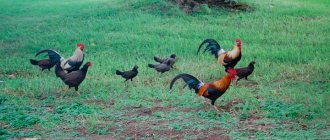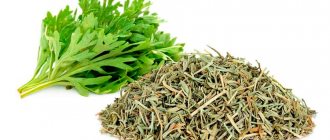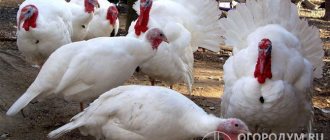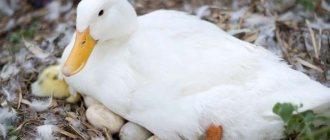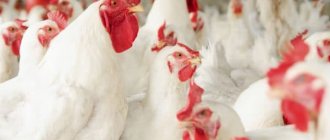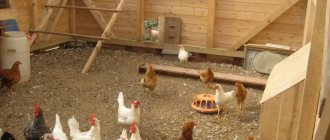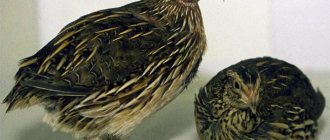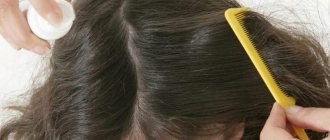The influence of various factors on productivity
There are many reasons that affect egg production. The main factors that determine productivity include the following:
- Breed of chickens Breeds are divided into egg, meat, fighting and decorative. Birds are selected depending on their purpose; more eggs are produced by representatives of breeds specially bred for this purpose.
- Age of birds. Egg production decreases when a chicken reaches a certain age. Depending on various factors, the average age is 2 years .
- Conditions of detention. The number of eggs received from a chicken depends on the air temperature, the cleanliness of the chicken coop, and the availability of a run.
- Stress and shock. Birds are sensitive to stress. Egg production will decrease if chickens are frightened by noisy guests and animals. There will also be fewer eggs when the hens recover from the move.
- Diseases and pests. Infections, helminths and parasites cause a decrease in productivity.
- Chicken nutrition The quality, quantity and composition of feed, the regimen and regularity of feeding are the fundamental components of egg production.
- Water scarcity. For sufficient productivity, laying hens must always have access to clean drinking water.
- Season. In winter, productivity decreases.
- Moulting chickens. Renewal of feather cover negatively affects egg production.
- Air temperature. When it gets colder, chickens lay fewer eggs.
- Planting density. If the chickens are cramped in the coop, this will reduce egg production.
Important Tips
It is important to choose a suitable location and set up a walking and feeding enclosure. To improve productivity indicators, it is advisable to periodically add various insects, vegetables and root crops, and grass into the enclosure. It's better if it's mobile. This will allow you to add more grass as needed. In the meantime, seedlings appear on the site and the grass grows a little, the walking and feeding enclosure is moved to a new location. An increase in egg production also occurs if certain herbs are sown on the site. Birders advise choosing plantain, dandelion, wheatgrass and nettle. Additionally, alfalfa, milkweed, wheatgrass and quinoa are planted.
To improve productivity indicators, feeders and drinking bowls are placed in the enclosure. In this case, the birds do not need to constantly run to the chicken coop. The more time they spend outside, the more healthy greens and insects they eat.
Overheating is another factor that negatively affects egg production. To protect the livestock, canopies are installed over the enclosure. They will protect not only from the sun, but also from rain.
If a chicken sits on eggs, the egg production period is shortened. When raising chickens at home, chickens or hatching eggs are purchased from poultry farms. The incubation period for eggs is 21 days. During this time, the hen will produce about 25 eggs. In addition, the hen will not lay eggs until she leaves chicks. And she goes with him for about 2 months.
How to determine the suitability of laying hens?
To determine how suitable a laying hen is, you need to examine its appearance. The bird, capable of laying a large number of eggs, has a small oval-shaped head. The body is dense and tightly built, with a wide chest. The eyes are clear. The smooth yellowish beak is slightly curved downwards, the earrings are bright red, the feathers on the neck are thick. A healthy, promising bird is active, constantly on the move, looking for food, has a good appetite, and lays eggs regularly. If an individual is substandard in any respect, it is discarded.
Diseases
The greatest danger to egg production is caused by viral diseases:
- Newcastle disease: reduces this figure to 25-35%.
- Infectious laryngotracheitis: breathing becomes difficult, the bird dies from suffocation. Naturally, during the course of illness one cannot expect good results in obtaining eggs.
- Infectious bronchitis: the disease is accompanied by dysfunction of the oviduct. A decrease in egg production is accompanied by an increase in the proportion of eggs of irregular shape and with a rough shell.
- Infectious encephalomyelitis: reduces egg production by 7-12%.
- Influenza: characterized by the death of a large number of birds and a sharp decrease in the egg production of chickens.
To prevent or minimize the consequences of the disease, a number of preventive measures are carried out: laying hens are kept separately from the rest of the poultry, only high-quality and fresh food is given, one or two people care for laying hens (since people are carriers of many diseases, it is necessary to limit their access to poultry ). In addition, separating sick birds from healthy ones and directly vaccinating helps.
Ways to increase egg production in chickens
To control the egg production of chickens, you need to carefully and regularly inspect the livestock. This will allow you to notice in time if the birds are showing signs of illness or decreased appetite, and respond accordingly. To increase egg production, you need to improve the chicken coop, provide walking and regulate nutrition.
See also
For what reasons can chickens lay eggs without shells and what to do about it? Read
Nutrition
Feeding directly affects egg production. When chickens begin to lay eggs worse, the quality of feed needs to be improved. It is important to pay attention not only to the volume of food, but also to the composition, as well as the regularity and uniformity of food intake.
Diet
Birds should receive food according to a clear schedule, to which they quickly get used to. If food is given sporadically, the chickens will crowd around waiting for a treat. When the feeders are filled at the same time, the inhabitants of the chicken coop will quickly remember it and will gather at the appointed hour:
- Morning meal. The first time food is given immediately after waking up. In winter, despite the late start of natural daylight, artificial lighting is used to increase daylight hours and give out the morning portion at the same time as in summer. Thus, the egg production of chickens will not decrease.
- Evening meal. It is advisable to give grain at night, and it is better to change the type every day. For example, today oats, tomorrow wheat, the day after tomorrow barley. The time of the last feeding is calculated in such a way that the chickens have time to peck off a portion before they go to roost, that is, about an hour before bedtime.
In winter, chickens are fed three times a day, while in the morning and afternoon they can be given wet food and a mash of ground grain, boiled potatoes, bran, and grain in the evening. In the summer, if the hens have enough space to walk, they switch to a two-time feeding regimen; when keeping birds indoors, food is still given 3 times at equal intervals.
Diet
In order to receive a lot of eggs from laying hens, it is necessary to provide adequate nutrition that will contain the substances necessary for the body. Feeds are divided into dry, wet and mixed:
- Dry food is a grain mixture. It may include barley, oats, wheat, rye, titicale (a hybrid of wheat and rye).
- Wet food is not stored for a long time; it is better to prepare it immediately before use and give it in such quantity that the chickens eat it within an hour, otherwise the excess will acidify. More often, a mash of bran, boiled potatoes, vegetables, and food waste is used as such food.
- Mixed feeds are made by mixing dry and wet feeds.
The diet of chickens should, in addition to food, also contain clean water in sufficient quantities. It is necessary to monitor the drinking bowls, replenishing them as they become dirty or empty. To improve digestion, birds are given small pebbles, gravel or sand.
The diet includes vitamins and microelements by adding premixes - vitamin-mineral complexes - to the feed.
Use of compound feeds
The use of ready-made commercial feed saves the poultry farmer’s time and also ensures that the bird receives the substances necessary for the body. Feed for adult laying hens most often includes wheat, barley, corn, soybean and sunflower cake, meat or fish meal, crushed shells, phosphate and salt. You can prepare compound feed with your own hands by chopping and mixing all the ingredients.
See also
How to quickly get rid of weasels in a chicken coop and rules for fighting predatorsRead
Sprouted grains
Oats, barley, wheat, and triticale are suitable for germination. The grains are poured with warm water for a day. Then they are transferred into a layer of 5-7 cm onto shields and mixed three times a day. Germination takes three days at room temperature. You can feed the product after the appearance of 5 mm sprouts. This additive accounts for 30-40% of the total daily amount of grain. If vitamin A deficiency is detected, the sprouts are allowed to rise to 6 cm. After this, they are cut off and given to the birds. The remaining grain can be re-moistened and you can get another harvest of greens.
Breeds with increased productivity
To get the maximum possible number of eggs, you should think about this at the stage of choosing laying hens. There are breeds with high egg production, they need to be given special attention if you plan to keep chickens specifically for eggs:
- Leghorn. Despite the fact that Leghorn chickens are shy, they produce a lot of eggs: the recorded record was 371 eggs per year. Birds begin to lay eggs at five months.
- Hisex. This breed is a Leghorn hybrid and is also characterized by high egg production - up to 300 per year. Chickens have good immunity and are resistant to cold.
- Loman Brown. The advantage of the breed is the calm nature of the chickens and the high number of eggs, up to 320 per year. In addition, birds have high adaptive qualities. The disadvantage is that productivity decreases significantly when the chicken is only one and a half years old, so the composition will have to be constantly updated.
conclusions
- High-quality productive characteristics of eggs are provided by egg or meat-egg breeds. They are capable of producing up to three hundred eggs per year for their owners, using a minimum amount of feed.
- The correct diet, recommended daylight hours, and comfortable temperature will help maximize the productivity of chickens.
- Dryness and cleanliness are the main criteria for ensuring the health of laying hens.
- When breeding chickens at home, you need to carefully monitor the characteristics of growing the selected breeds.
What are the necessary conditions of detention?
In order to increase egg production, it is important to provide chickens with proper living conditions. The arrangement of the chicken coop and run directly affects the productivity of laying hens.
Chicken coop microclimate
The size of the home for chickens is calculated at the rate of half a square meter per individual. Optimally, the temperature in the chicken coop should be 22-25 degrees; to maintain this temperature, the floor, walls and ceiling are insulated, and heaters are installed. To allow fresh air to enter, ventilation must be installed in such a way that there are no drafts. Windows will provide natural light, lamps will provide artificial light.
Hygiene is maintained through regular cleaning and washing of feeders.
Walking hens
The bird run should be spacious, surrounded by a high fence; feeders, drinking bowls should be installed inside, and grass should be sown. It is necessary to provide a canopy from the sun and precipitation.
Lighting
Daylight hours for good productivity should be between 14 and 16 hours. If necessary, for example, in winter, the illumination is adjusted by installing and turning on additional lamps in the chicken coop.
Forced shedding
Forced molting is usually used on large farms or poultry farms. It is used for chickens aged about one and a half years, so as not to replace a laying hen, which over time began to lay fewer eggs, with a young one, but to cause a new egg-laying cycle in her.
This extends the life of the individual, makes the bird healthier, and increases the quality of the eggs. In contrast to long-term natural molting, forced molting takes place in a shorter period of time and is caused in the entire livestock simultaneously through zootechnical techniques.
The egg production of domestic chickens can and should be increased. Simple techniques will provide laying hens with proper nutrition and proper living conditions, which will help improve their productivity.
Feeding standards
It is important to follow feeding standards. The calculations take into account the weight and productivity of laying hens. If the chicken weighs up to 2 kg and produces no more than 100 eggs, 120 g/1 head is sufficient. When the weight increases by 250 g, add 10 g of feed mixture. For every 30 eggs over 100 pcs. another 5 g is required. Age also affects the norms - pullets require more calories than adults. It is worth considering the season - in winter the calorie content increases.
Breeds of laying hens prone to obesity periodically need to arrange fasting days, replacing the grain mixture with grass in the morning and evening, and pouring half the norm of wet mash into the feeders during the day. Amount of feed in grams per head (taking into account seasonality):
| Type of feed | Winter | Spring | Summer | Autumn |
| Whole grain/crushed grain | 50/50 | 55/45 | 60/40 | 55/45 |
| Fresh herbs/herb meal | 0/5 | 20/3 | 30/0 | 20/3 |
| Cake, meal | 12 | 13 | 12 | 12 |
| Feed yeast | 3 | 4 | 3 | 3 |
| Gravel | 1 | 1 | 1 | 1 |
| Bone/meat-bone meal | 1/5 | 1.5/7 | 1.5/5 | 1/5 |
| Carrot | 40 | 20 | 0 | 20 |
| Bran | 10 | 10 | 10 | 10 |
| Salt | 0.7 | 0.7 | 0.7 | 0.5 |
| Shell, chalk | 4 | 5 | 4 | 4 |
| Return | 20 | 30 | 30 | 20 |
Shedding
Molting is the process of natural feather change in a bird. It usually occurs in the fall, before the onset of winter. The molting period itself lasts from a month to three. The shorter this period, the better the chicken lays eggs. Another feature: if a hen begins molting in October-November, then she lays more eggs. Accordingly, the longer the molting period and the earlier it occurs, the lower the egg production.
Chickens molting
Molting in chickens is influenced by many factors:
- inadequate and unbalanced nutrition ;
- high ambient temperature
- insufficient amount of fluid ;
- too much daylight for a long period;
- the effect of certain diseases ;
- various stresses and other factors.
To reduce molting time, a forced change of bird feathers is carried out. The point of this operation is to save feed, bring the chickens into the molting stage and also bring the chickens out of it. At the same time, the total molting period is reduced to one and a half months. This is achieved by changing the diet, length of daylight hours, temperature (increase in temperature), artificial fasting, etc.
Temperature
The optimal temperature for laying hens is between 17 and 22 degrees. If it is lower, the bird spends its energy to warm its body. The increased temperature of the environment forces her to drink more moisture and look for places with a temperature lower than in a cozy nest with a soft straw. Both the first and second negatively affect the total number of eggs laid. To maintain the optimal temperature in the chicken coop, you need to insulate and heat it in winter. In the summer, provide the room with good ventilation without drafts and the opportunity to walk in the morning and evening, and in the daytime - to hide in the room from the scorching rays of the sun.
